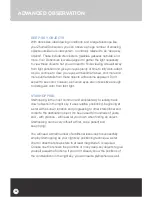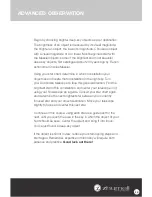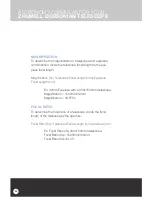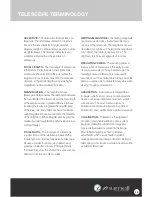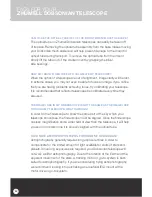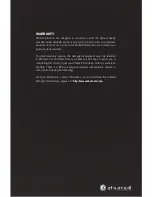
25
No matter which eyepiece you intend to use, always start by using the
lowest-power (longest focal length) eyepiece to locate and center the
object. Lower magnification means a wider field of view, making it easier
to find an object and justify your scope in its direction.
Once you’ve centered the desired object using your lowest-power
eyepiece, go ahead and make the switch to a higher magnification. Make
further centering adjustments, and continue to work up if desired. Higher
magnifications are useful for small and bright objects like planets and
double stars. Viewing the Moon with increased magnification also yields
great results.
Deep-sky objects, however, typically look best at medium and low
magnifications. This is because they tend to be faint, yet have apparent
width. Deep-sky objects often fall from view at higher magnifications,
since the image becomes dimmer. This is not an unbreakable rule, since
many galaxies are bright enough for high magnification, but works as a
decent rule-of-thumb.
Regardless of the object, or what recommendations are made, the
best way to become familiar with proper viewing magnifications is
to experiment. Always start with low magnification and wide field-
of-view and work your way up. If the view continues to improve,
continue increasing power. If the image begins to degrade, back off the
magnification and use a lower-power eyepiece.
OBSERVATION TIPS FOR YOUR
ZHUMELL DOBSONIAN TELESCOPE


















